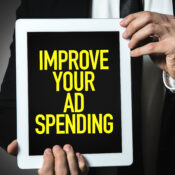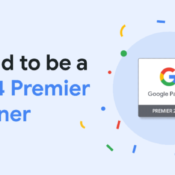/
/
Insta-pocalypse
 Most of us in our teens and twenties use, or have friends who use, the massively popular service Instagram. This application is a photo sharing social network known for it’s professional filter effects. Instagram has come a long way from its start-up a mere two years ago in October 2010. The service has evolved significantly in the past couple years and was even purchased by Facebook last April for $1 billion. This also made the thirteen sole employees at Instagram filthy rich and caused many users to question the integrity of the social service since the purchase.
On December 18th, 2012, Instagram released its updated Terms of Service, which were to take effect this month. The new Terms of Service stated sections, which caused a massive uproar over almost every media outlet. The most questioned was this statement: “To help us deliver interesting paid or sponsored content or promotions, you agree that a business or other entity may pay us to display your username, likeness, photos (along with any associated metadata), and/or actions you take, in connection with paid or sponsored content or promotions, without any compensation to you.” This type of open ended and loose terminology was unsettling for most users.
After a massive backlash and misunderstanding of how Instragram would use users photos, the company has since backpedaled and released this statement on their blog.
Most of us in our teens and twenties use, or have friends who use, the massively popular service Instagram. This application is a photo sharing social network known for it’s professional filter effects. Instagram has come a long way from its start-up a mere two years ago in October 2010. The service has evolved significantly in the past couple years and was even purchased by Facebook last April for $1 billion. This also made the thirteen sole employees at Instagram filthy rich and caused many users to question the integrity of the social service since the purchase.
On December 18th, 2012, Instagram released its updated Terms of Service, which were to take effect this month. The new Terms of Service stated sections, which caused a massive uproar over almost every media outlet. The most questioned was this statement: “To help us deliver interesting paid or sponsored content or promotions, you agree that a business or other entity may pay us to display your username, likeness, photos (along with any associated metadata), and/or actions you take, in connection with paid or sponsored content or promotions, without any compensation to you.” This type of open ended and loose terminology was unsettling for most users.
After a massive backlash and misunderstanding of how Instragram would use users photos, the company has since backpedaled and released this statement on their blog.
 Although Instagram has retracted its terms, many users have jumped ship and left the service altogether. From a user perspective, this is just one more change to Instagram that I am not very pleased with. I believe this opens up Pandora’s Box for Instagram to use my photos or likeness without my permission for financial gains.
From the service standpoint, Instagram appears to be adding advertising in the same style Facebook has on their site. Facebook uses "sponsored stories" in which a user's likeness is used to generate a story in the news feed. When a user clicks “Like” on a Facebook page, a paid post could be made visible to that users friends saying the user “likes” the said page. For me, this creates a conflicted outlook on the whole “Insta-pocalypse”. I am split on these kinds of changes to social media advertising. As a marketer, I know that paid listings for Facebook pages work extremely well for the right client. As a user of these services, I also have to wonder if there is a better way to advertise across social media without infringing on the privacy of subscribers.
As a marketer, I want social media marketing to successful but as a user of these services, I want my public content to be a little less public. Facebook and Instagram are on the right track but there is room for improvement. As social media gives us new and improved tools for advertising, our clients win. However, as users, we have to remain cautious that this does not come at a cost to us.
Rob Wirtjes is a Graphic Designer at TargetClick – Powered by Mudd Advertising. Contact him at rob.wirtjes@mudd.com to learn more about the social media service Instagram and other graphic design queries.
Although Instagram has retracted its terms, many users have jumped ship and left the service altogether. From a user perspective, this is just one more change to Instagram that I am not very pleased with. I believe this opens up Pandora’s Box for Instagram to use my photos or likeness without my permission for financial gains.
From the service standpoint, Instagram appears to be adding advertising in the same style Facebook has on their site. Facebook uses "sponsored stories" in which a user's likeness is used to generate a story in the news feed. When a user clicks “Like” on a Facebook page, a paid post could be made visible to that users friends saying the user “likes” the said page. For me, this creates a conflicted outlook on the whole “Insta-pocalypse”. I am split on these kinds of changes to social media advertising. As a marketer, I know that paid listings for Facebook pages work extremely well for the right client. As a user of these services, I also have to wonder if there is a better way to advertise across social media without infringing on the privacy of subscribers.
As a marketer, I want social media marketing to successful but as a user of these services, I want my public content to be a little less public. Facebook and Instagram are on the right track but there is room for improvement. As social media gives us new and improved tools for advertising, our clients win. However, as users, we have to remain cautious that this does not come at a cost to us.
Rob Wirtjes is a Graphic Designer at TargetClick – Powered by Mudd Advertising. Contact him at rob.wirtjes@mudd.com to learn more about the social media service Instagram and other graphic design queries. Recent Posts
Mudd Advertising
Let’s leverage!
Mudd Advertising
Politics Schmolitics!
Mudd Advertising
Mudd has been promoted to Google Premier Partner
All Categories
Tags
anonymous website visitor identification
automotive
branding
cable
case study
chevrolet
chevy
data
digital marketing
direct marketing
display
dynamic inventory display
facebook
first party
google
google analytics
google premier partner
internet marketing
local seo
Matthew Moody
media
mobile search
mobile seo
MUDDid
online marketing
online video
organic
organic search
pay per click
political
ppc
promotion
retargeting
search engine marketing
search engine optimization
sem
seo
social advertising
social media
social media marketing
strategy
traditional marketing
traditional media
Volunteer Spotlight
youtube




